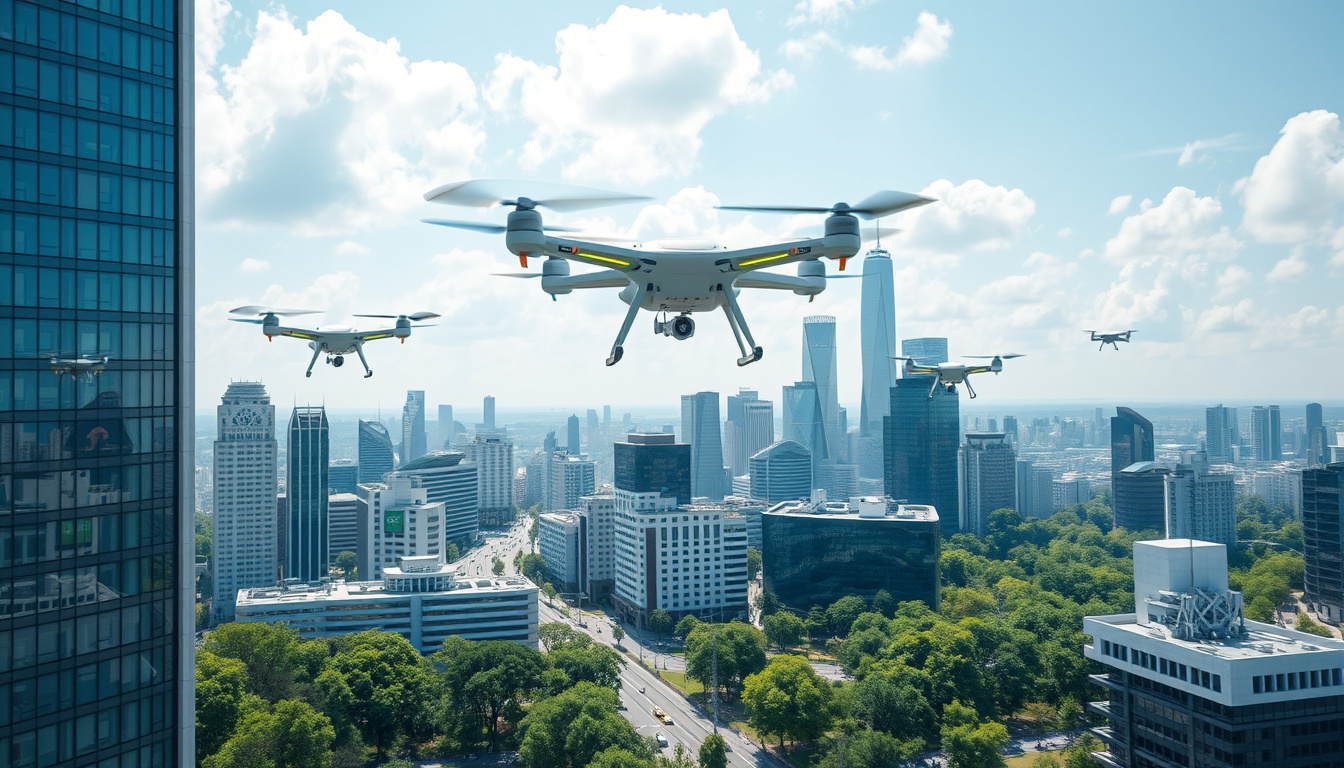Urban air mobility (UAM) represents a transformative shift in transportation, aiming to alleviate the challenges of urban congestion through the use of electric vertical takeoff and landing (eVTOL) aircraft. This innovative approach to transport is not merely a theoretical concept but is rapidly progressing from design to implementation, promising faster, more efficient, and environmentally friendly transportation options in crowded urban areas.
Understanding Electric VTOLs
Electric VTOLs are aircraft designed to take off, land vertically, and fly using electric propulsion systems. Their design is inherently different from conventional aircraft, focusing on minimizing energy consumption while maximizing utility in an urban context. Key technological features include:
- Multirotor configurations: These designs, such as quadrotors and tilt-rotors, enable stability and flexibility in flight, accommodating various mission profiles.
- Hybrid propulsion systems: Some eVTOLs use a combination of electric and traditional propulsion systems, optimizing performance and range according to specific operational needs.
The appeal of eVTOLs lies in their potential for reduced trip times and increased accessibility, especially within metropolitan regions where traditional transport infrastructure may be overextended.

Design Exploration and Performance Standards
Recent studies, such as those conducted by NASA and other aerospace researchers, focus on identifying optimal design strategies for eVTOL vehicles. These designs explore various architectures with the goal of maximizing passenger capacity while minimizing operational costs and environmental impact.
One significant finding emphasizes the trade-off between vehicle speed, energy efficiency, and noise emissions—crucial factors for urban acceptance and regulatory approval. For instance, while configurations with multiple smaller rotors can decrease energy usage, they often result in higher noise levels than designs featuring larger, fewer rotors. Thus, comprehensively evaluating these factors is essential for achieving a balanced design that meets both operational and community needs.
Key Design Considerations:
- Energy consumption per passenger-kilometer: A core metric indicating the efficiency of various vehicle designs.
- Noise emissions: As urban areas are sensitive to noise pollution, minimizing sound footprint is critical for community integration.
- Cruising speed and mission range: High-speed capabilities are necessary for commercial viability, particularly in urban air corridors where time savings are paramount.
The Path Forward
The exploration of eVTOL designs illuminates several pathways forward for urban air mobility. As regulatory frameworks develop, there is significant potential for UAM to enhance transportation networks. The ideal scenario encompasses seamless integration with existing public transport systems, enabling users to transition effortlessly between different forms of transport.
Looking towards the future, advancements in battery technology and propulsion systems will be pivotal. Innovations are expected not only to enhance the performance of eVTOLs but also to reduce the environmental footprint further. By 2050, the goal is to have a robust UAM infrastructure that not only supports electric aircraft but also addresses the societal and environmental challenges associated with urban flight.
Conclusion
Urban air mobility, propelled by innovative electric VTOL designs, stands at the forefront of a new transportation paradigm. By prioritizing efficiency, sustainability, and community concerns—while leveraging new technologies—eVTOLs have the potential to revolutionize how we navigate our cities. As stakeholders from industry, government, and academia collaborate, the future of urban mobility looks brighter, enabling our urban skies to soar.
——————————————————
Voltsandvolts.com is a blog dedicated to electric vehicles (EVs). Our blog features articles on EV reviews, stories, tips, tricks, charging infrastructure, and battery technology. Join the conversation and become part of the Voltsandvolts.com community today!
